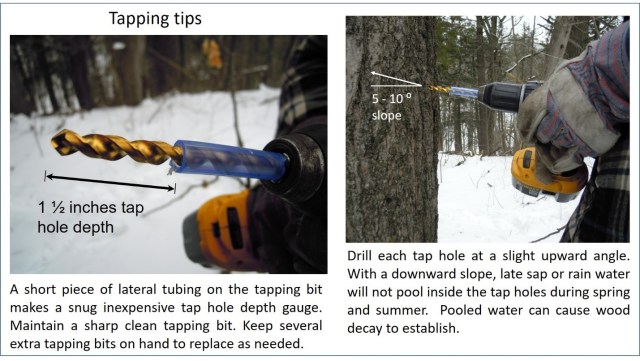This video by the Ontario Maple Syrup Producers Association gives an excellent overview:
- Carefully inspect the tree for a good spot to tap. See Where to Tap for more information.
- Drill 1.5 inches and no more than 2 inches deep into sapwood when tapping trees. An upward angle will create a slope to naturally drain sap and rainwater from the tap hole after the harvest season is finished. Dry tap holes are less likely to develop wood decay.



3. Install spiles gently. Avoid using excessive force with the tapping hammer, just enough to provide a snug firm seal in tap holes. Spouts can always be set a bit firmer during follow up inspections.

The written and graphic content in these pages was originally created by Todd Leuty (previous Agroforestry Specialist), and edited by Jenny Liu (Maple, Tree Nut, and Agroforestry Specialist).
